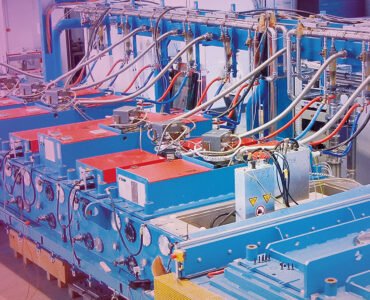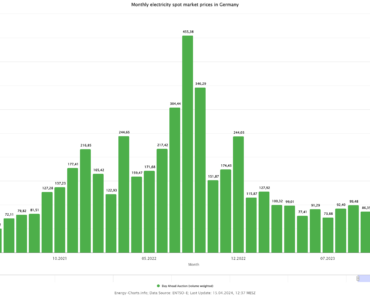One of the scenarios in our study assumes that there will be massive resistance to the expansion of new infrastructures in the energy sector.
What needs to happen by 2050 to reduce our CO2 emissions from transport, electricity, processing and building heating by at least 95%? The study “Ways to a Climate-Neutral Energy System” by our institute provides the first encouraging answer to this question: In theory, it is technically feasible to secure the energy supply in Germany with renewable energies. How expensive and complex this will be depends on each individual. In order to better understand how exactly, we have used various scenarios to simulate the consequences of our behavior on the course of the energy turnaround.
There are already protests in many places in Germany against new wind turbines and electricity transmission grids. One of the scenarios in our study therefore assumes that there will be massive resistance to the expansion of new infrastructures in the energy sector. This would prevent the transformation of energy systems from taking the economically most favorable path.
Specifically, we have assumed for our calculations that, compared with a cost-optimal course as simulated by the reference scenario, in this scenario of non-acceptance
- energy suppliers can only build half as many wind turbines on land and at sea.
- The interconnection capacity for the import and export of electricity also hardly increases compared to today, because there is no acceptance for the expansion of corresponding grids.
- Additionally, trucks can hardly drive electrically, because the construction of overhead lines on motorways fails due to protests.
Researchers at Fraunhofer ISE have “fed” our optimization model REMod with these special conditions and analyzed how the transformation path to 95% climate neutrality will change by 2050 compared to the reference scenario.
Scenario non-acceptance: What happens if there is strong resistance to large infrastructures?
1. Photovoltaics must replace the missing wind power
The simulation of the reference scenario showed that it would be economically most advantageous to install around 260 GWel of onshore and offshore wind power capacity in Germany by 2050, together with 415 GWel of photovoltaic capacity. However, if there is no acceptance for large-scale infrastructure measures, energy suppliers would install less than half as much wind energy. At the same time, in order to achieve the CO2 reduction anyway, significantly more photovoltaics (additional 230 GWel) would have to be installed to compensate for this. The chart shows the different amounts of wind and solar energy that we would then need in Germany depending on the scenario.

2. More photovoltaics also means more battery storage
The reference scenario assumes an optimal use of wind energy. However, in order to compensate for strong resistance to infrastructure, we could not simply replace the missing wind turbines one-to-one with solar energy systems. We would then have to install more power overall (as can be seen clearly in the graph). In addition, wind turbines have higher full-load hours than solar plants, so if wind energy is used primarily, there is no need to park as much electricity between them. If one also assumes that there is a strong resistance to the expansion of the power grid, the acute shortage of electricity could be imported from neighbouring countries only to a limited extent. All three factors together mean that in a Germany with a high level of rejection of infrastructure measures we would need 60% more battery storage than in a scenario that makes ideal use of the potential of wind power.
3. Increased costs despite leaner energy infrastructure
One might intuitively assume that less extensive infrastructure measures also save money. However, the energy demand remains unchanged (what happens if it drops, I describe in the sufficiency scenario) and the additional photovoltaic add-on required to compensate would mean that the energy turnaround would even be somewhat more expensive under these conditions. Furthermore, we would have to compensate for the shortage from our own renewable energy with additional imports of green hydrogen from abroad. In this scenario, three times the amount of the synthetic energy carrier compared to the reference scenario with optimal wind deployment.
Our research team was happy to see that it would theoretically be possible to replace a lack of wind turbines with more solar energy and thus meet the CO2 targets for our energy system. Nevertheless, it must be clear that even this scenario still assumes a tripling of wind power compared to today. The energy turnaround will not succeed without it.
Cover picture © Jonas Krüger/MEV-Verlag, Germany
| What do you think which path Germany’s energy transition will take? Let us know and take part in our survey on the study. |














Add comment